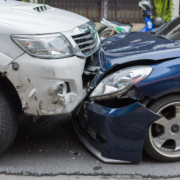How to Manage Financial Strain After an Alabama Personal Injury
Suffering a personal injury in Alabama can be a life-altering experience, not just physically and emotionally, but financially as well. The aftermath of an accident often brings a wave of unexpected expenses, from mounting medical bills to lost income due to time away from work. This financial strain can compound the stress and emotional burden of the injury itself, leaving many feeling overwhelmed and unsure of where to turn.
It is important to know that you are not alone in this struggle. There are strategies and resources available to help you manage these financial challenges and navigate the road to recovery. And if your injury resulted from someone else’s negligence or reckless actions, and experienced personal injury lawyer can help you recover the compensation that you are entitled to under the law.
Prioritizing Your Financial Needs
In the wake of a personal injury, gaining a clear understanding of your financial situation is crucial. This starts with creating a detailed budget that accounts for all of your income sources and expenses.
- List your monthly income, including any disability benefits or financial assistance.
- Itemize your expenses, from essential needs to discretionary spending.
- Identify areas where you can cut costs and allocate resources more effectively.
Cutting Costs
When finances are tight, it is important to distinguish between necessary expenses and those that can be reduced or eliminated:
- Look for non-essential spending to trim, such as subscriptions, dining out, or premium cable packages.
- Consider cheaper alternatives or temporary sacrifices to free up funds for pressing needs.
- Remember that these adjustments don’t have to be permanent.
Prioritizing Bills
When faced with a stack of bills, focus on prioritizing the most critical expenses first, such as:
- Housing costs (rent/mortgage)
- Utilities (electricity, water, gas)
- Essential medical expenses
If you’re having trouble making ends meet, reach out to your landlord, mortgage lender, or utility providers to discuss hardship arrangements or payment plans.
Seeking Financial Assistance
If your injury has left you unable to work, you may be eligible for disability benefits with your Alabama employer:
- Short-Term Disability (STD): Provides a portion of your income for a limited period (usually 3-6 months) while you recover.
- Long-Term Disability (LTD): Kicks in for more severe or permanent disabilities that keep you out of work for an extended time.
To apply, provide medical documentation of your injury and work with your employer’s HR department or insurance provider.
Government Assistance
Beyond disability benefits, various government assistance programs may provide financial relief:
- Alabama Medicaid: Helps cover medical expenses for those with limited income and resources.
- Supplemental Nutrition Assistance Program (SNAP): Provides food assistance to eligible low-income individuals and families.
- Low-Income Home Energy Assistance Program (LIHEAP): Assists with utility payments for those who qualify.
Charities & Non-Profits
Many charities and non-profit organizations in Alabama are dedicated to helping individuals and families in crisis. These may include:
- The American Red Cross, United Way, and Salvation Army offer various forms of assistance.
- Injury-specific organizations, such as the Brain Injury Association of America or the Christopher & Dana Reeve Foundation, provide resources and grants.
Understanding Your Legal Options
If your injury was caused by someone else’s negligence or wrongdoing, you may be entitled to compensation through a personal injury claim. Damages can include medical expenses, lost wages, pain and suffering, and more.
To pursue a claim, you’ll need to prove that the other party was totally at fault and that their actions directly led to your injuries. Consult with an experienced Alabama personal injury lawyer to evaluate your case and guide you through the legal process.
Settlement vs. Lawsuit
When pursuing a personal injury claim in Alabama, you generally have two options: reaching a settlement or taking the case to trial:
- Settlements often mean receiving compensation more quickly and avoiding the uncertainty and expense of a trial but may be lower than what you could win in court.
- Lawsuits can lead to higher payouts but involve more risk, time, and legal fees.
Your attorney can help you weigh these factors and decide on the best course of action.
Dealing with Medical Debt
If you are facing large medical bills that were not covered by insurance, don’t assume you have to pay the full amount right away. Here are some important steps to take:
- Request an itemized bill and review it for any errors or overcharges.
- Contact the billing department to discuss your financial situation and see what options they can offer.
- Many hospitals and healthcare providers are willing to negotiate costs or set up payment plans.
Setting up a payment plan can make medical debt more manageable by breaking the total amount owed into smaller, more affordable monthly installments. Some things to keep in mind with regard to payment plans include:
- Be realistic about what you can afford each month when negotiating a plan.
- Commit to an amount you can pay consistently to avoid defaulting on the agreement.
- Get the payment plan in writing and understand any interest or fees that may apply.
In rare cases, hospitals or healthcare providers may offer medical debt forgiveness for patients experiencing extreme financial hardship. Eligibility is typically based on factors like income, assets, and the size of the medical debt in relation to your overall financial situation. While not common, it’s worth inquiring about with your provider, especially if you have a low income and limited resources.
Protecting Yourself in Extreme Financial Hardship
If your medical debt or other bills are sent to collections, know your rights and how to protect yourself from harassment:
- The Fair Debt Collection Practices Act (FDCPA) prohibits debt collectors from using unfair, deceptive, or abusive practices to collect a debt.
- Debt collectors cannot call at unreasonable hours, use threatening language, or disclose your debt to others.
If you feel your rights are being violated, file a complaint with the Consumer Financial Protection Bureau (CFPB) or the Alabama Attorney General’s Office.
In extreme cases where the financial burden of a personal injury becomes overwhelming and unmanageable, bankruptcy may be a potential option to consider.
- Chapter 7 bankruptcy can discharge many types of unsecured debt, including medical bills.
- Chapter 13 bankruptcy allows you to restructure your debts into a more affordable repayment plan.
Bankruptcy is a serious decision with long-lasting consequences for your credit and financial future. It should only be considered as a last resort after exploring all other options.
Suffered a Personal Injury in Alabama? Contact M. Adam Jones & Associates for Legal Help
Navigating the financial aftermath of a personal injury is a challenging and often overwhelming process. It is important to remember that recovery takes time, both physically and financially. By prioritizing your needs, seeking out available resources, and advocating for yourself, you can begin to regain control of your financial situation.
If you believe you have a valid personal injury claim for damages, it is important to speak with a reputable attorney as soon as possible. Insurance companies spend a lot of money fighting these claims, and they are probably already hard at work on their defense. In a situation like this, it makes sense to have an experienced legal advocate working on your behalf as well.
For strong legal guidance with personal injury claims in Alabama, contact M. Adam Jones & Associates. We will meet with you to review your case and advise you of your legal rights and options. And if we end up working together, you will not have to pay any upfront attorney fees – you only pay attorney fees if we win your case.
- Adam Jones,
Managing Partner
- Adam Jones & Associates, LLC
206 N. Lena St.
Dothan, AL 36303
Tel: 334-699-5599
Fax: 334-699-5588










